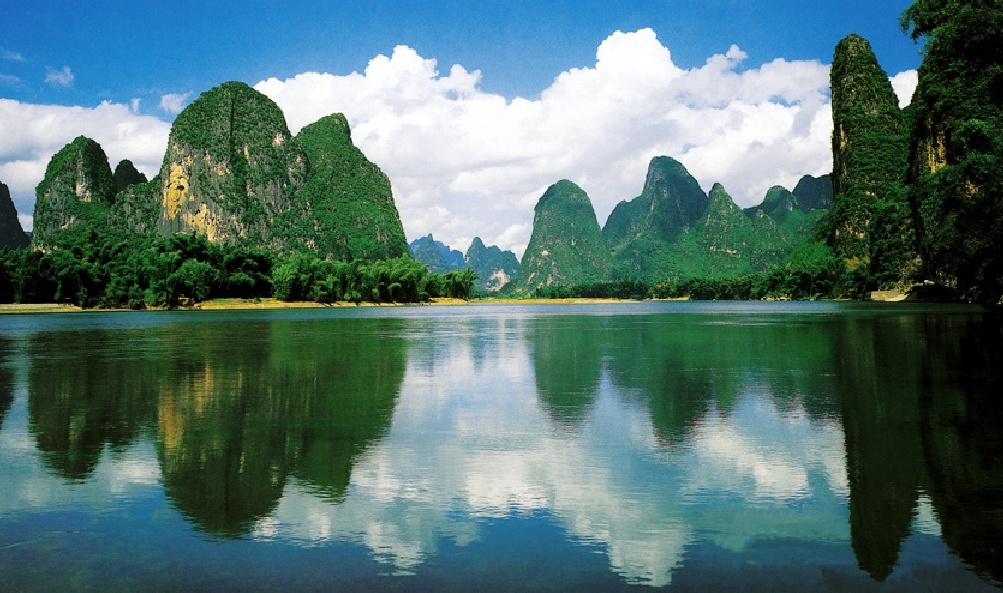Winding through the scenic karst mountains, the Lijiang River (also called the Li River) in the Guangxi province of south China has regained its glamour, thanks to restorative anti-pollution efforts.
The Li River originates in the Mao’er Mountains in Xing’an County and flows in the general southern direction through Guilin, Yangshuo and Pingle. In Pingle the Li River merges with the Lipu River and the Gongcheng River and continues south as the Gui River, which falls into the Xi Jiang, the western tributary of the Pearl River, in Wuzhou. The upper course of the River Li is connected by the ancient Lingqu Canal with the Xiang River, which flows north into the Yangtze; this in the past made the Li and Gui Rivers part of a highly important waterway connecting the Yangtze Valley with the Pearl River Delta.
The 439-kilometre (273 mi) course of the Li and Gui Rivers is flanked by green hills. Li river cruises from Guilin to Yangshuo are famous, attracting millions of visitors a year, so restoring the river is also an economic revitalization strategy.
Photo of Li River near Yangshuo courtesy of Charlie Fong via Wikipedia.

